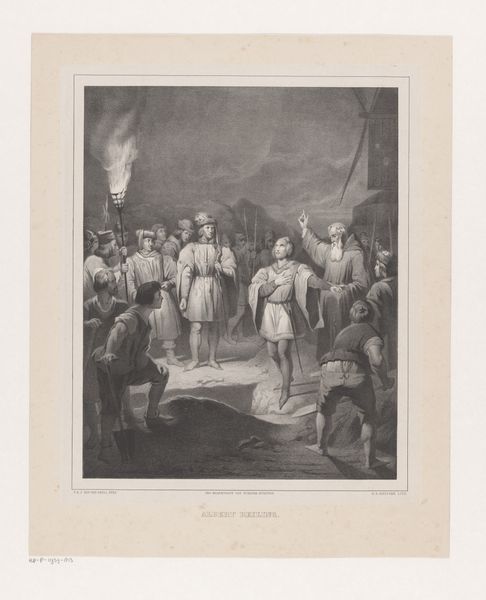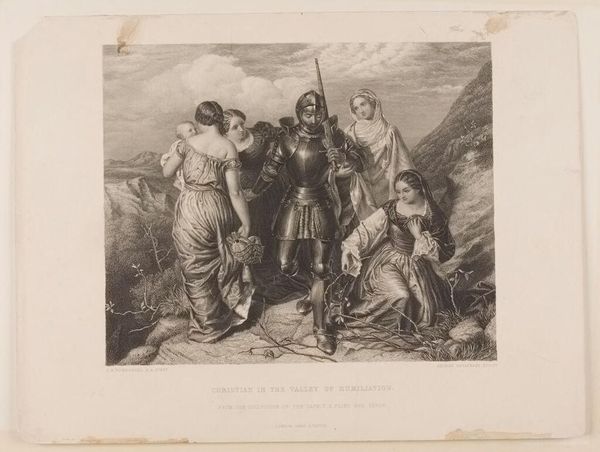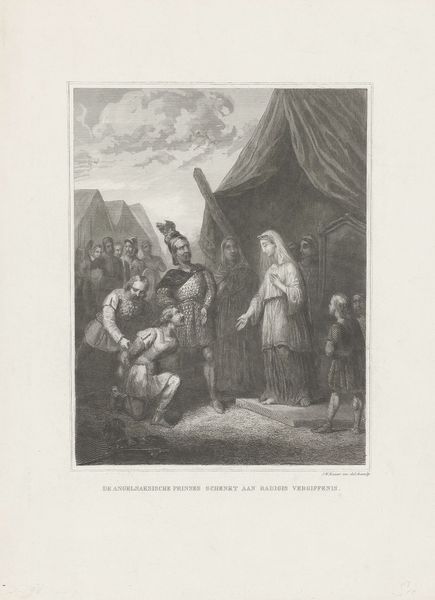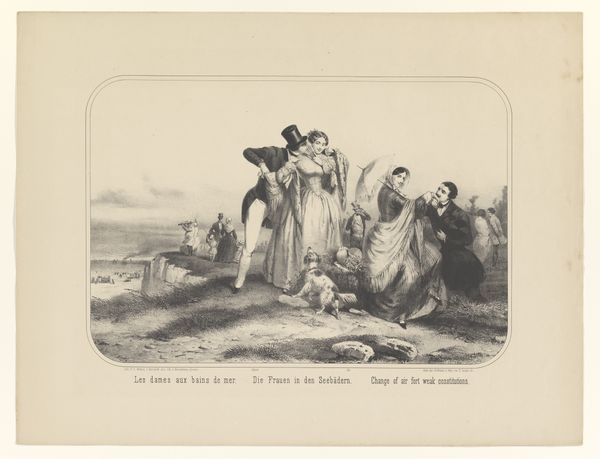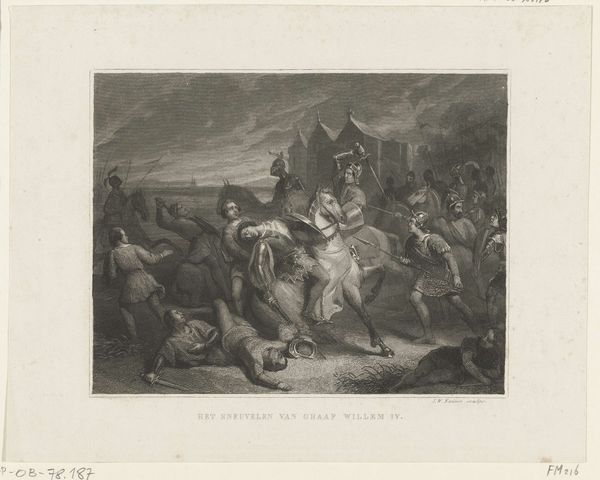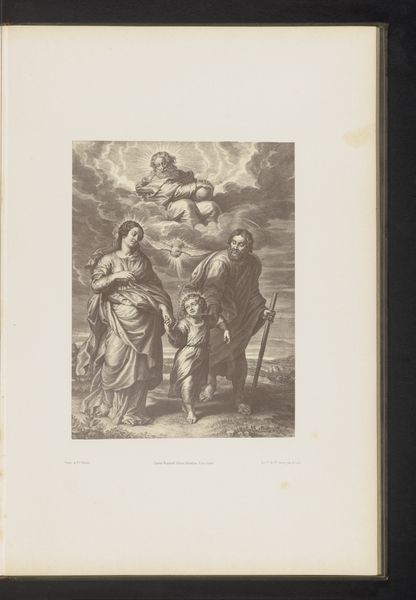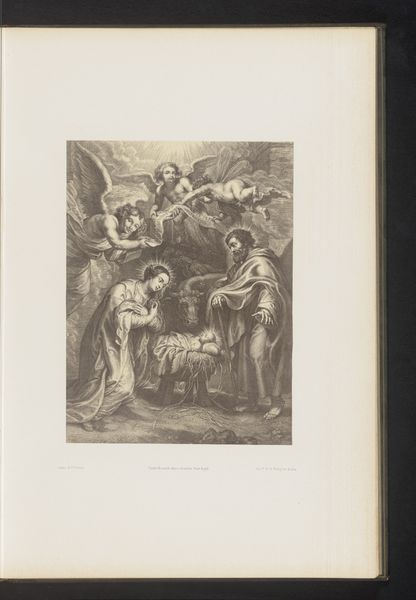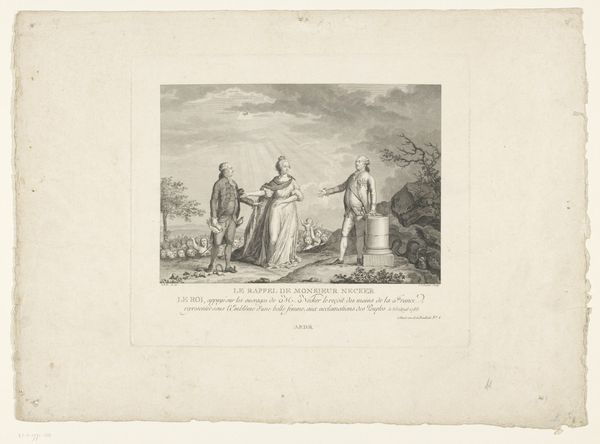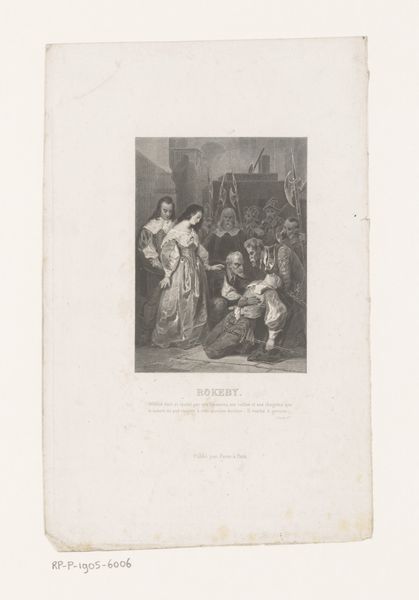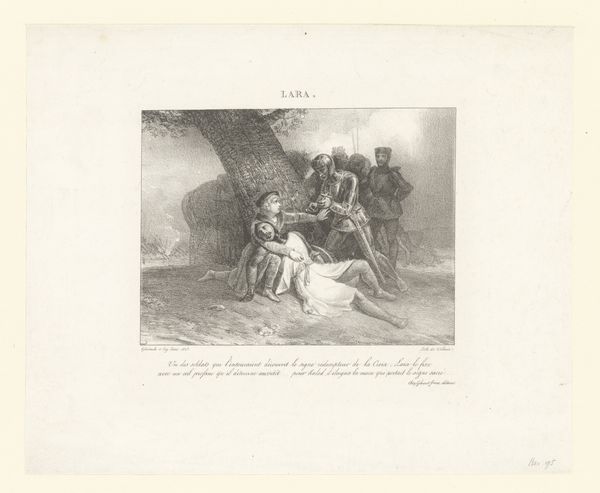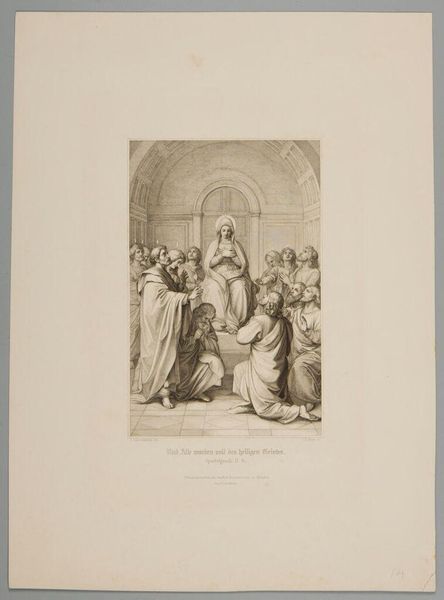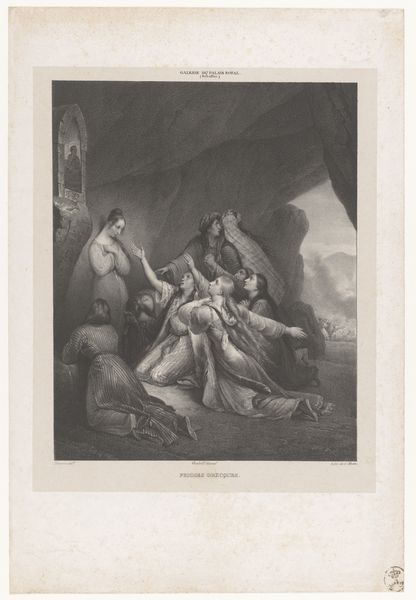
print, engraving
#
portrait
#
narrative-art
# print
#
old engraving style
#
figuration
#
romanticism
#
genre-painting
#
history-painting
#
academic-art
#
engraving
#
realism
Dimensions: height 285 mm, width 205 mm
Copyright: Rijks Museum: Open Domain
Editor: Here we have "Agrippina verlaat de legerplaats," or "Agrippina Leaving the Military Camp," an engraving dating from 1838 to 1840. The gray tones create a somber mood, and Agrippina, holding a child, is clearly the focal point. What can you tell me about it? Curator: This print invites us to consider the role of women, particularly powerful women like Agrippina, in shaping historical narratives. In the 19th century, historical paintings like this often served as moral lessons or reflections on contemporary social issues. What does it mean to depict Agrippina as a mother in this setting, surrounded by soldiers? How does that contrast with her known political maneuvering and influence? Editor: It almost seems like a way to soften her image, to make her more sympathetic. Was that a common trope at the time? Curator: Exactly. Representing powerful women through the lens of motherhood, was a frequent way of neutralizing their agency, of making their power palatable within patriarchal structures. How do you think the artist is engaging with the concept of power – who has it, how it is displayed, and the expectations that come with it? And further, how does the medium, the print, play into making this history accessible to a wider public? Editor: That’s fascinating! I never considered how the choice of medium impacts the message. Seeing it this way makes me question the artist’s intentions and the expectations of the audience. Curator: Precisely! This engraving becomes a lens through which we can examine 19th-century societal anxieties surrounding female leadership, the construction of historical narratives, and even the role of art itself in shaping public opinion. Hopefully, we can all become more aware and critical viewers of visual rhetoric. Editor: I’ve definitely learned a new way of looking at historical prints. Thanks for sharing your insight!
Comments
No comments
Be the first to comment and join the conversation on the ultimate creative platform.
